When the weather turns fine there’s nothing better than saddling up and setting off with your equine friend for a happy hack through the glorious UK countryside. However, if you haven’t ventured far from home for a while, it’s important to prepare well.
After all, you don’t want to take a tumble or worse because you’ve both grown rusty.
Whether you’re an experienced rider or a virtual novice you’ll find plenty of tips worth listening to in our handy guide to safe and happy hacking in the country.
Safety has to be paramount on any hack if you want to have a great time with your faithful companion. And if things do go wrong, insurance for horses from Equesure can help you financially so you can get back in the saddle in no time.
-
Always plot your route and split it into sections
Plotting a route beforehand is an obvious first step but how about breaking the route down into manageable sections? It’s a good way to give you something to aim for as you ride. It also gives you an idea of how far you’ve ridden, and how far you’ve left to go.
That way, if the weather starts to worsen, you’ll know how far from the shelter of home you both are. Staying on top of your progress during a hack is also a useful way to stay switched on throughout your ride.
The British Horse Society (BHS) has some great information on finding a route, particularly when you’ve just moved to a new area.
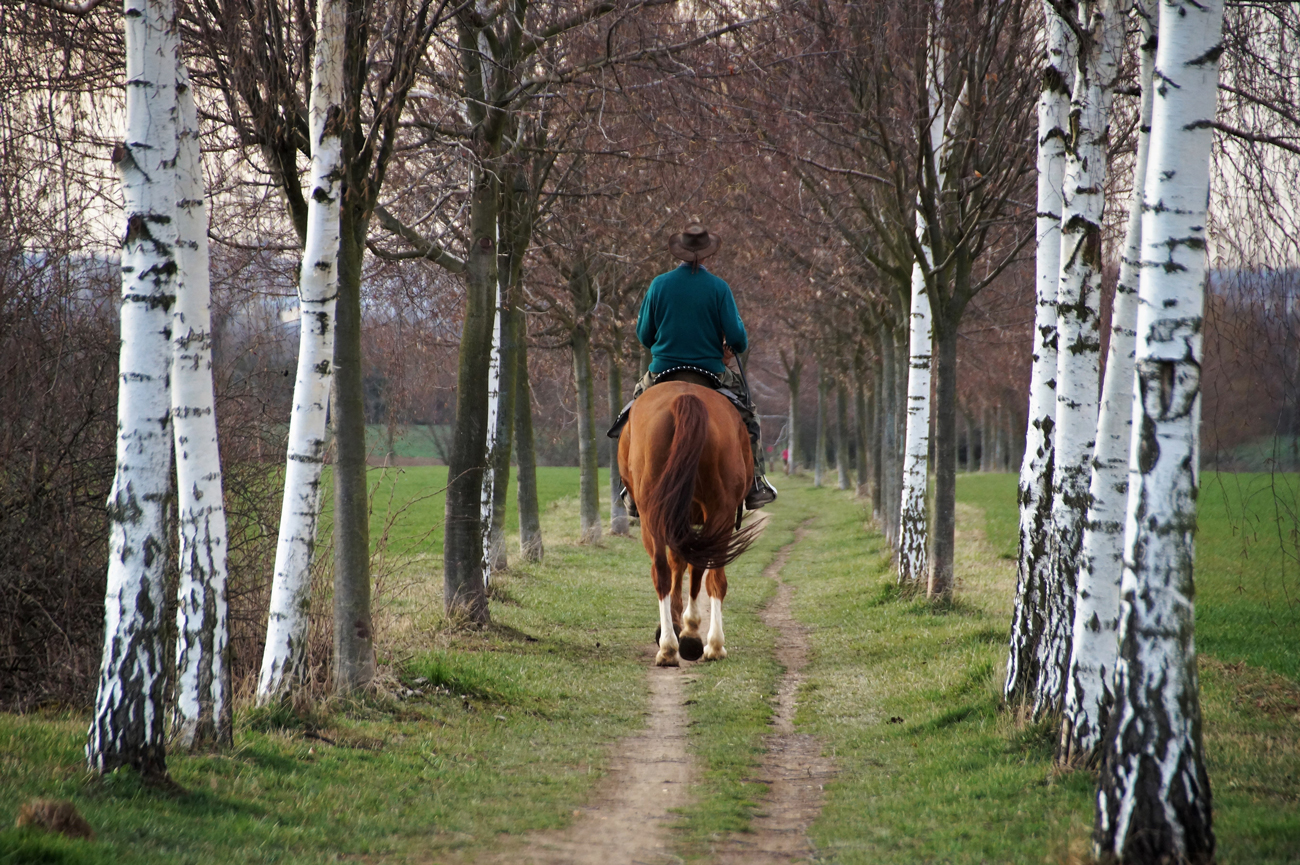
-
Check the weather forecast
Heading off on a hack is exhilarating and great fun but sometimes you could find yourselves in a risky situation if you haven’t kept up to date on the weather reports beforehand. Your usually calm horse can become spooked if thunder starts or the wind begins to pick up.
Heading out knowing you both might get caught in a rain shower won’t worry most riders. But what happens if the weather gets really bad and you’re caught in a storm? If you want to know how to ride safely in bad weather then we’ve got helpful advice on that, too!
To ensure a stress-free ride with your equine companion whatever the weather, always make sure you’ve got the right horse insurance.
-
Wear the right clothing
That said, the old saying goes ‘there’s no such thing as bad weather, only unsuitable clothing’. For anyone who’s spent hours outdoors with their horses this is well known. If you’re not wearing the right clothing then a hack can soon turn into a bit of a trial.
Whatever the weather, both you and your horse should wear high-viz clothing to make yourself seen on country roads. With blind bends giving drivers only split seconds to react, more warning of your presence could make a big difference.
-
Read the Highway Code
There are lots of rules contained in the Highway Code that are applicable to horse riders. To ensure the safety of you, your horse and other road users, make sure you’re well up to date with the guidance.
-
Circular routes are a useful way to avoid napping
Just in case you don’t know, napping is where your horse will suddenly decide they’re not going to go any further. This can obviously be annoying for the rider but can be a common behavioural issue even the best behaved horses can develop.
One potential cause can be if you often ride a route where you reach a certain point and then turn around and head for home. Then, when you decide you want to ride further, the horse will refuse.
By picking a route that goes around in a loop, you won’t have to turn around to come home and this will help avoid your horse learning to nap. If this isn’t possible then avoid turning around in the same place.
-
Don’t forget to practice
If the weather has been kind and you’ve been out on plenty of hacks then happy days. You should be ready to head off on another hack, provided you’ve done the right safety prep.
However, if you haven’t ridden for a little while then it might be best to get reacquainted around the yard first. Horses, just like us, can forget their manners and can develop bad habits over time.
It’s better to get into a regular riding routine to tune up their responses and deal with any behavioural issues before heading out on a hack.
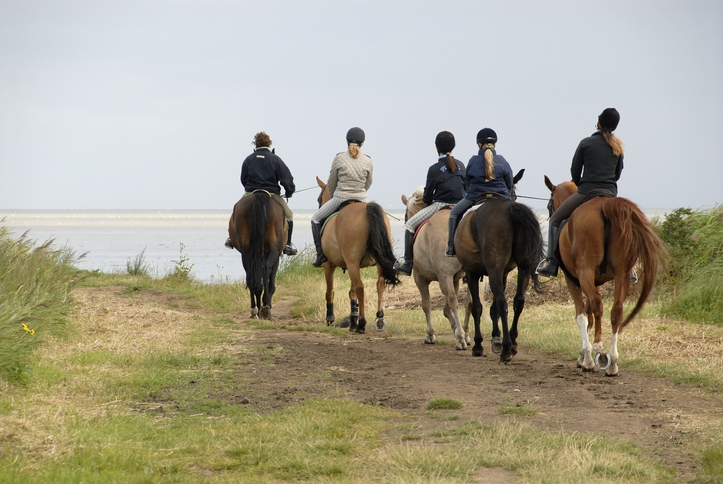
-
Take a friend
Riding with another experienced horse rider is a great way to stay safe, gain confidence and have fun all at the same time.
It’s important to do this before hacking alone, particularly if your horse is new to you, young, inexperienced or hasn’t been out hacking for a while. Even just having someone following you on a bike or on foot can be a great help if you get into difficulty.
-
Could someone else hack your horse out first?
Depending on your level of confidence, if you haven’t hacked with your horse before it might be worth getting someone more experienced to take them out for a hack first. If you’re feeling nervous, then it’s likely your horse will sense that and become nervous, too.
By sending them out with someone more confident who you trust, you can prepare the way for a successful hack. Whether it’s a friend, family member, or instructor they’ll also be able to give you vital tips on your horse’s particular quirks.
-
Avoid busy times of day
Even the quietest of country roads can have busy times when the sheer volume of traffic can get unnerving. So, pick the time of day you ride wisely.
Rush hour tends to be in the mornings when people are going to work and school or in the later afternoon when people are heading home.
Whatever time you choose, be aware of sunset and make sure you have enough daylight to get home without having to rush.
Making sure you understand road signs, hand signals and know how to communicate with other road users confidently will help ease any nerves. If you haven’t already done so then it’s worth checking out the BHS’s Ride Safe Award.
-
Brush up on your voice commands – and how to use them
Communication is key between you and your horse. Knowing the top 10 voice commands and how to use them will not only make your hack more fun but also much safer for both of you.
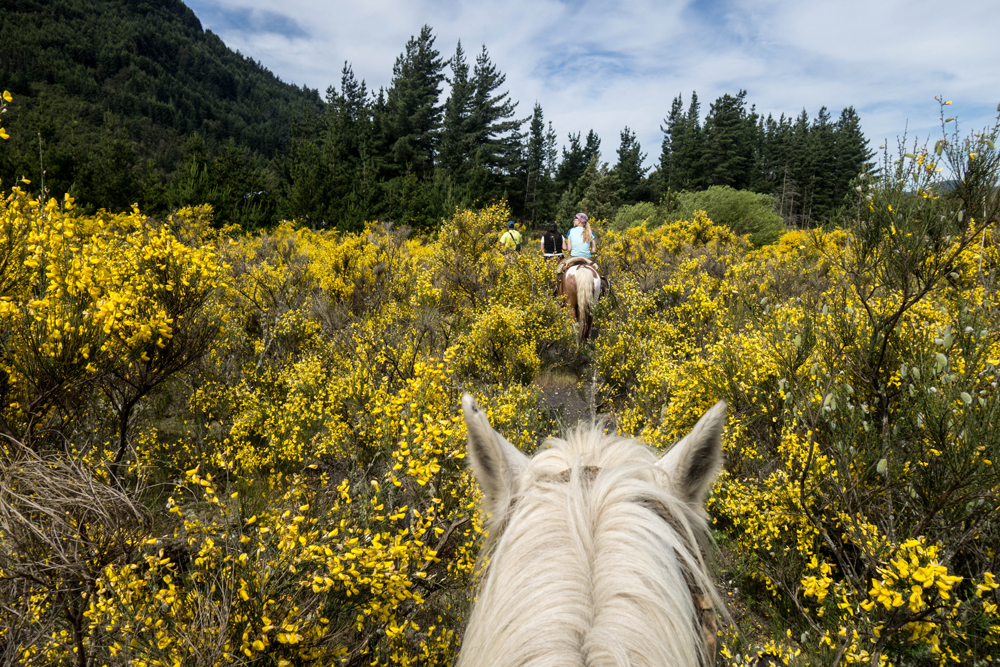
-
Fresh horse? Do some groundwork first
Whether it’s due to the weather, changes in routine or feeding, sometimes a horse can be feeling very fresh and full of energy. Unfortunately, this can mean you’re at greater risk of being thrown off or the horse getting spooked on the road.
To take the edge off any over-enthusiasm, it’s a good idea to do some groundwork with your horse before heading out. Riding them in the confines of an arena is perfect and will mean you’ll spend less time stressing and more time focusing on enjoying the time together.
-
Change up your route
When you’ve found a route that works for you and your horse it’s all too easy to get into the habit of riding the same way every day.
However, if your hack becomes repetitive then not only is it going to get boring for you but it could lead to napping and other annoying equine behaviour. To get round this, mix up your routes as much as you can.
Horse riders have around 32,000km of bridleways and almost 10,000km of byways to explore with their trusty steeds. There’s bound to be a route nearby that’ll let you explore the countryside to your heart’s content!
-
Get them used to traffic before heading out on the road
It probably goes without saying, but if your horse is nervous or hasn’t met vehicles before you need to find a way to expose them to traffic in a safe area first.
Simple stuff like tractors or quad bikes around the yard, or someone cycling in their field can work wonders when it comes to building confidence on the road.
If possible, ask a friendly local farmer if you can follow their tractor around a field. It’s a great way for them to learn there’s nothing to fear – despite the smell and the noise!
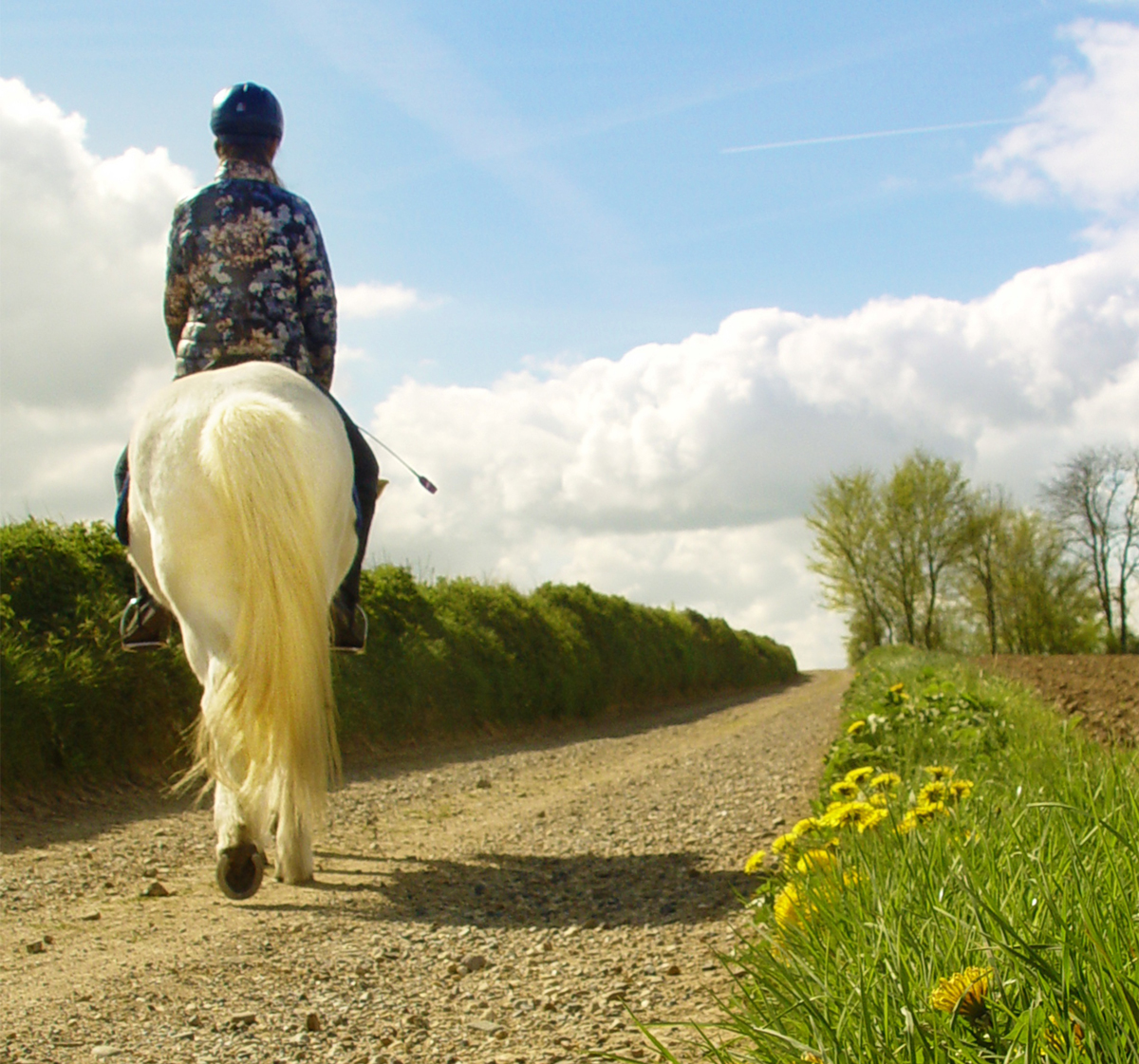
-
Getting over fear of livestock, dogs or other animals
When hacking in the countryside you could well come across a range of common and unusual livestock. From cattle, sheep and pigs to llamas and alpacas, ostriches, emus and even water buffaloes!
If you think you’ll encounter any of these when out hacking, try asking the owner if you can introduce your horse to the animals in a safe place. It will not only reduce the stress on you and your horse but also the livestock, too.
When it comes to those other favourite companions of man, dogs, a dangerous situation can develop if your horse gets spooked. In order to avoid this happening, follow the Blue Cross’s top tips when you’re out for your next hack.
To give you a helping hand also read our Equesure guides to riding safely near livestock and safety tips for dogs and horses.
-
Pace yourself
Choosing the right pace for your hack is an important part of keeping things interesting for you both. When safe to do so, try to move from a walk to a trot or even a canter – it’s great for their fitness!
As we said previously, try to avoid turning this into a habit. You don’t want your horse to suddenly start cantering at a certain place if you haven’t asked them to do so!
Finally, just as you would when performing groundwork, use the first and last part of your hack for warming up and cooling your horse’s muscles.
As with human athletes it’s a great way to avoid injury and having to claim on your horse insurance.
-
Tell a trusted friend
With recent figures from the BHS showing a worrying upward trend in road traffic incidents involving horses it’s important to take every precaution necessary.
If you’re going out on a hack, particularly if alone, you must tell someone where you’ll be going and how long you’ll be.
After all, if an accident happens when you’re out on a hack, the sooner help comes the better. It’ll put everyone’s mind at ease.
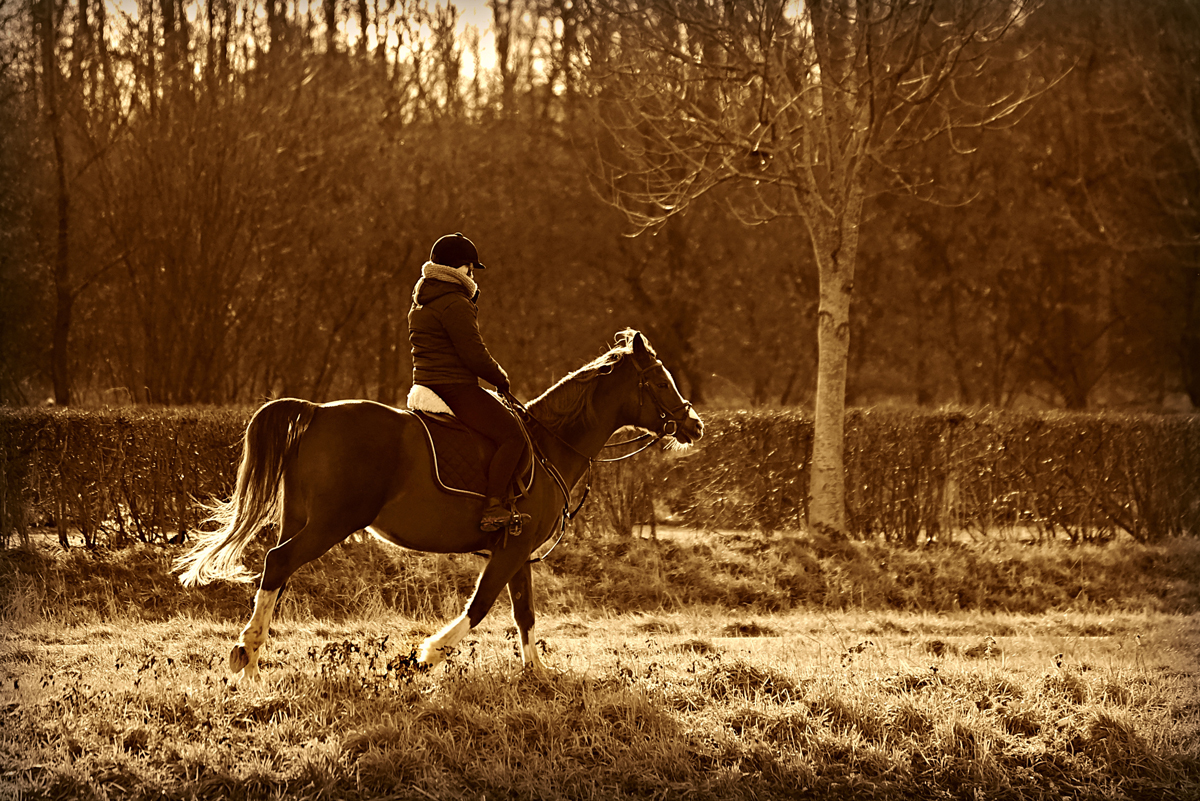
-
Take your mobile, and make sure it’s fully charged
Your mobile phone could be a vital lifeline for help if something happens when out on a hack. Don’t risk running out of battery, be fully charged before heading out together.
When out on a hack it could be worth turning off the lock code on your mobile phone. If there’s an emergency someone else might need to use your phone. Also make sure your emergency contact is at the top of your contacts list.
-
Download a safety app or two
From training management to monitoring your horse’s health and riding performance there are lots of great apps for horse riders. Download something like Horse Rider SOS to take care of safety.
-
Attach tags to your horse’s saddle and bridle
Always display your mobile number and an emergency contact name and number. If you and your horse get separated it could prove invaluable.
-
Stay aware
If you stop for a breather, make sure your horse is tied up properly and never leave them unattended. Horse theft is sadly a part of rural life. Read our helpful guide on how to stop horse theft and make sure your beloved equine doesn’t go walkabout.
Happy hackers need cover from Equesure
Whatever your plans, a horse insurance policy arranged through Equesure will guard against the financial consequences of any hacking mishaps.
With over 60 years of experience in the equine insurance market, the team at Equesure can offer you a bespoke horse insurance policy tailored to both your requirements and budget.
Get a quote for horse insurance today.
Policy benefits, features and discounts offered may very between insurance schemes or cover selected and are subject to underwriting criteria. Information contained within this article is accurate at the time of publishing but may be subject to change.








